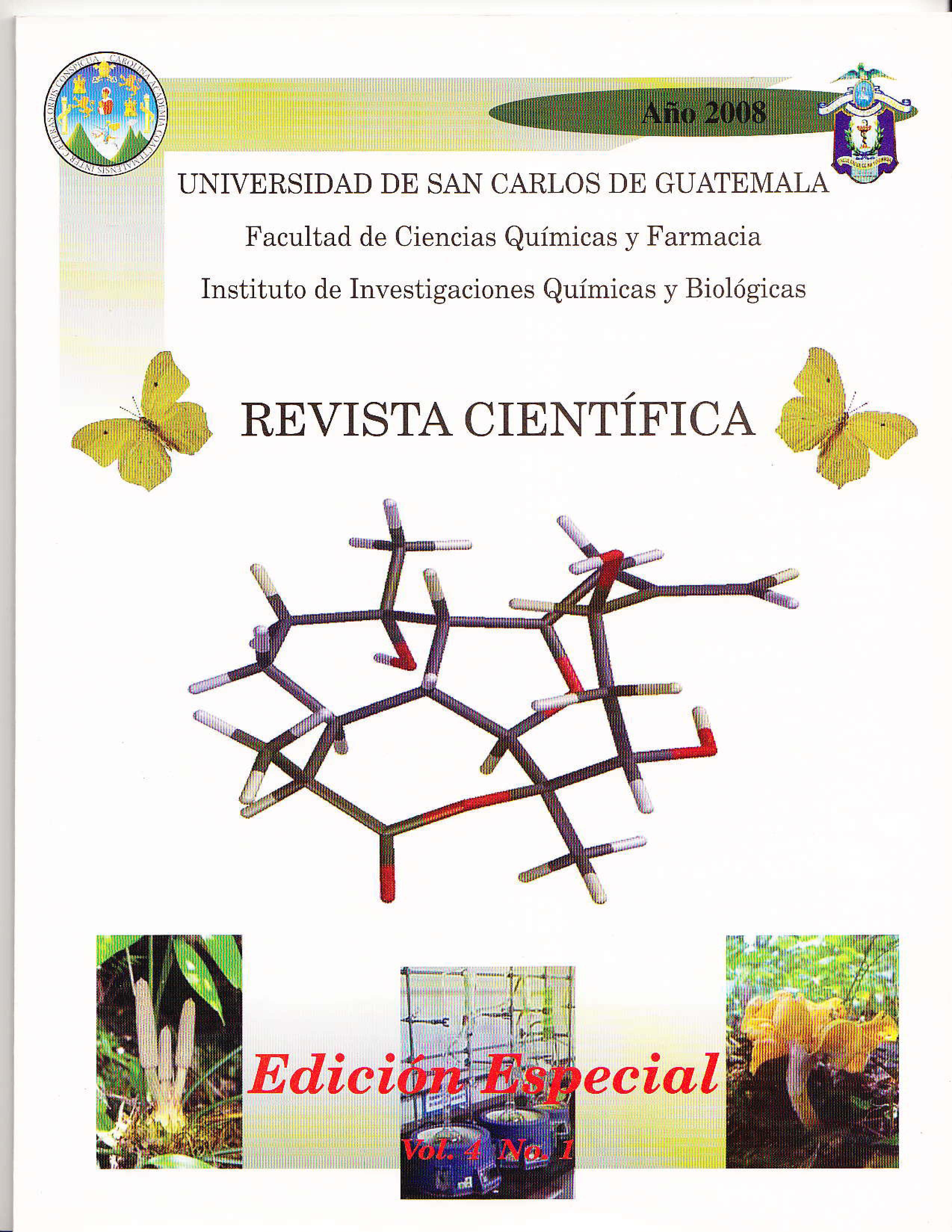Structural Elucidation By NMR Of The Briarellin Carbon Skeleton.
DOI:
https://doi.org/10.54495/Rev.Cientifica.EdicionEspecial2008.183Keywords:
Gorgonian octocorals, Briareum, secondary metabolites, nuclear magnetic resonance, diterpenes, briarellins, asbestinins, 2D-NMR, sub-spin systemAbstract
Caribbean gorgonian corals of the genus Briareum (Cnidaria, Gorgonaceae), have proven to be an important source of bioactive secondary metabolites. The gorgonian produces mainly three type of diterpenes: asbestinins, Caribbean gorgonians of the genus Briareum (Cnidaria, Gorgonaceae), are an important source of bioactive secondary metabolites. They biosynthesize three basic types of diterpenes; asbestinines, briarellinas and briareinas. Briarellins A-R and briarellins D and K peroxides are the only metabolites that have the briarelline skeleton that have been isolated from a marine organism in the Caribbean region. These highly functionalized diterpenes are part of the family of 2,11 cyclized Cembranoids, whose biosynthetic origin is proposed to derive from the cembrane carbon skeleton, via various oxidative cyclizations and methyl rearrangements. In this work, the Nuclear Magnetic Resonance NMR-properties of the carbon skeleton of Briarellina and the comparison between the two types of existing briarellinas, and of these, with that of asbestinines, are widely discussed. Through the concerted and exhaustive application of one- and two-dimensional NMR techniques, its four spin sub-systems and the connectivity between them to structure the carbon skeleton of the Briarellinas are shown. By comparing the 'H-NMR and 13C-NMR spectra between asbestinines and the different types of briarellins, clear differences are documented that allow differentiating between these types of secondary metabolites and even the stereochemistry on certain quinal centers around the carbon skeleton. of these compounds.
Downloads
References
Rodríguez, A.D.; Cóbar, O.M. The briarellins, new eunicellin-based diterpenoids from a Caribbean gorgonian. Briareitm asbestinum. Tetrahedron 1995, 51, 6869-6880, https://doi.org/10.1016/0040-4020(95)00339-A
Rodríguez, A.D.; Cóbar, O.M. Studies on the minor constituents of the Caribbean gorgonian octocoral Briareum ashestinum Pallas. Isolation and structure determination of the euniccllin-based diterpenoids briarellins E-I. Chemical and Pharmaceutical Bulletin of Japan. 1995, 43, 1853-1858, https://doi.org/10.1248/cpb.43.1853
Ospina. C.; Rodríguez, A.D.; Ortega-Barria, E.; Capson, T. Briarellins J-P and polyanthellin A: a new eunicellin-based diterpenes from the gorgonian coral Briareum polyanthes and their antimalarial activity. Journal of Natural Products. 2003, 66, 357-363, https://doi.org/10.1021/np0204500
Ospina, C.; Rodríguez, A.D. Bioactive Compounds from the Gorgonian Briareum polyanthes. Journal of Natural Products. 2006, 69, 1721-1727, https://doi.org/10.1021/np060317y
Wang, G.H.; Shen, J.H.; Chiang, M.Y; Lee, T.S. Pachyclavulariaenones A-C, three novel diterpenoids from the soft coral Pachyclavularia violácea. Tetrahedron Letters. 2001, 42, 2333-2336, https://doi.org/10.1016/S0040-4039(01)00180-0
Wang, G.H.; Sheu, J.H.: Chiang, Y.D.; Chiang, M.Y, Pachyclavulariaenones D-G. new di terpenoids from the soft coral Pachyclavularia violácea. Journal of Natural Products. 2002, 65, 1475-1478. https://doi.org/10.1021/np020095d
Claridge, T.D . High Resolution NMR Techniques in Organic Chemistry. Pergamon, London, U.K. 1999.
Morales, J.J.; Lorenzo, D.; Rodríguez, A.D. Application of two-dimensional NMR spectroscopy in the structural determination of marine natural products. Isolation and total structural assignment of 4-deoxysbcstinin diterpenes from the Caribbean gorgonian Briareum asbestinum. Journal of Natural Products. 1991, 54, 1368-1382, https://doi.org/10.1021/np50077a021
Rodríguez, A.D. Two-dimensional NMR spectra of asbestinin diterpenes isolated from Briareum asbestinum (Pallas). Total stereochemical assignment by two-dimensional NMR techniques. Magnetic Resonance in Chemistry. 1992, 30, 977-986, https://doi.org/10.1002/mrc.1260301012
Rodríguez, A.D.; Cóbar, O.M. ; Martínez, N. Isolation and structures of sixteen new asbestinin diterpenes from the Caribbean gorgonian Briareum ashestinum. Journal of Natural Products. 1994, 57, 1638-1655, https://doi.org/10.1021/np50114a005
Dewar, M.L; Zoebisch, E.G.; Healy, E.F.; Stewart, J. J. Development and use of quantum mechanical molecular models. 76. AMI: a new general purpose quantum mechanical molecular model. Journal of the American Chemical Society. 1985, 107, 3902-3909, https://doi.org/10.1021/ja00299a024
G.B. Rocha, R.O. Freire, A. Simas and J.J.P. Stewart RM1: A reparameterization of AMI for H. C, N, O, P. S. F. Cl Br, and I, Journal of Computational Chemistry. 2006, 27, 1101-1111, https://doi.org/10.1002/jcc.20425
Downloads
Published
How to Cite
Issue
Section
License
Copyright (c) 2009 O. Cobar

This work is licensed under a Creative Commons Attribution 4.0 International License.
Authors who publish with this journal agree to the following terms:
- Authors retain copyright and grant the journal right of first publication with the work simultaneously licensed under a Creative Commons Attribution License 4.0 that allows others to share the work with an acknowledgement of the work's authorship and initial publication in this journal.
- Authors are able to enter into separate, additional contractual arrangements for the non-exclusive distribution of the journal's published version of the work (e.g., post it to an institutional repository or publish it in a book), with an acknowledgement of its initial publication in this journal.
- Authors are permitted and encouraged to post their work online (e.g., in institutional repositories or on their website) prior to and during the submission process, as it can lead to productive exchanges, as well as earlier and greater citation of published work.









